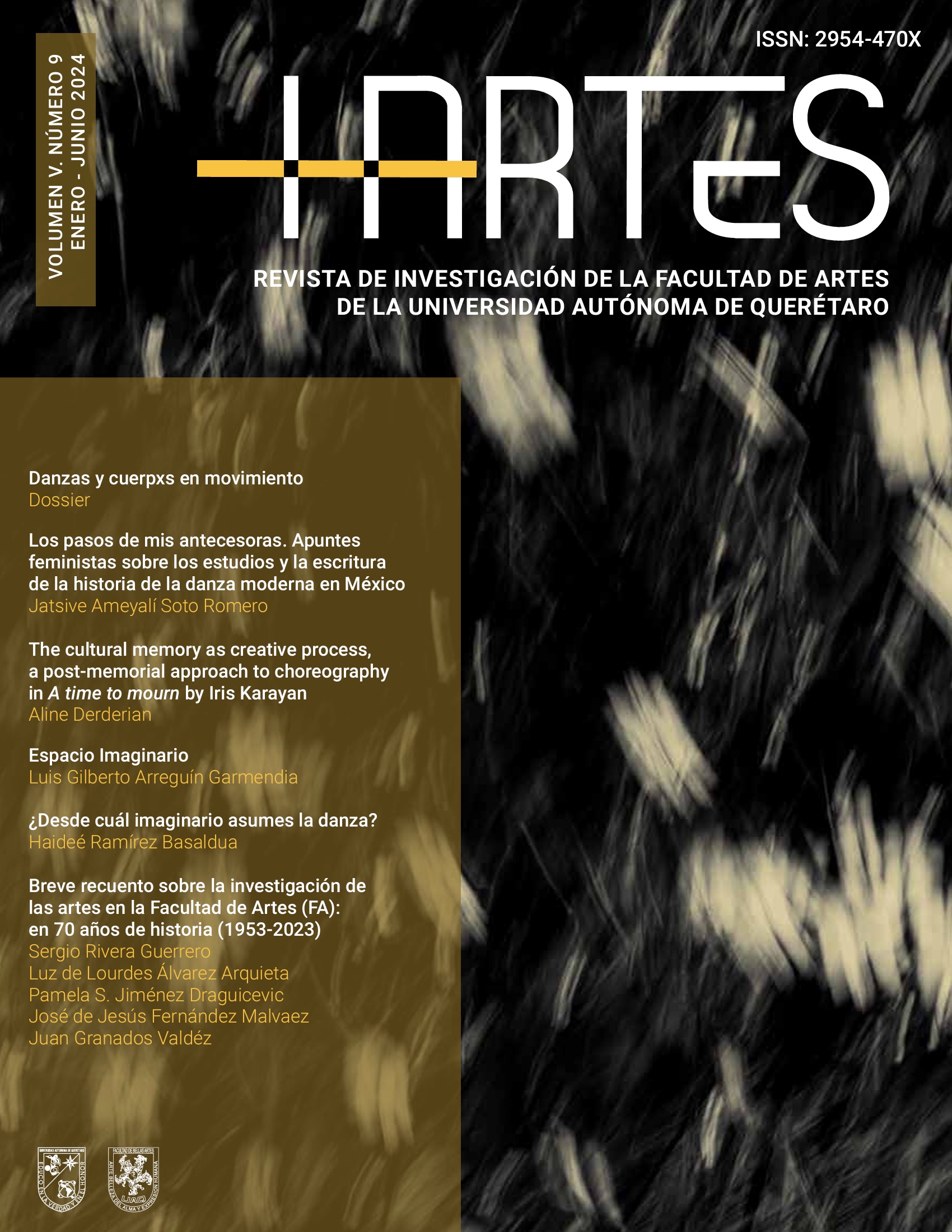Abstract
Literature is an art that has found expression in other disciplines such as dance, particularly ballet, and music. But, how is it that even without relying on a language based on verbal communication, they managed to "speak" to their audience and convey the same story depicted on paper? In this research, from the renowned "Balcony Scene" of the Shakespearean tragedy Romeo and Juliet, we examine the process of transformation from narrative discourse to dance and musical discourse. Said transition is carried out through a shift of signs and an established network of interconnected sensations in the exploration of the world that opens from the stage.
References
Barthes, R. (1999). Mitologías (Schmucler, H., trad.). México: Siglo XXI.
Boston Symphony Orchestra. (9 de octubre de 2018). Behind the Music: Prokofiev’s Romeo & Juliet [video]. YouTube. Recuperado de https://www.youtube.com/watch?v=gLsO1aI149o&t
Crisp, C. (s.f.). Maker of dancers. Kenneth MacMillan. Repuerado de https://www.kennethmacmillan.com/maker-of-dancer
Eco, U. (2000). Tratado de semiótica general (Manzano, C., trad.). Barcelona: Lumen.
Evans, G. B. (2003). “Introduction”. En W. Shakespeare, Romeo and Juliet (pp. 1-62). Cambridge: Cambridge University Press. Recuperado de: http://citeseerx.ist.psu.edu/viewdoc/download?doi=10.1.1.842.4639&rep=rep1&type=pdf
Fontanille, J. (2017). Soma y sema. Figuras semióticas del cuerpo (Blanco, D., trad.). Lima: Universidad de Lima.
Haskell, A. (1958). Anatomía del ballet: una guía sobre el Ballet clásico y moderno al alcance de todos (Taracena, B., trad.). Ciudad de México: Editorial Novarro.
Martínez, I. C. y Epele, J. (2008). “Música y Corporalidad: Relaciones de coherencia entre danza y música en coreografías de ballet y de movimiento libre”. VII Reunion Anual de SACCoM, pp. 339-346. Recuperado de: https://www.aacademica.org/martinez.isabel.cecilia/109
Merleau-Ponty, M. (1953). La estructura del comportamiento (Alonso, E., trad.). Buenos Aires: Librería Hachette.
Muntanyola, D. y Belli, S. (2016). “El valor narrativo de la comunicación en la danza contemporánea: habitus, musicalidad y emoción”. Revista de Antropología Social, 25 (1), pp. 133-151. Recuperado de https://doi.org/10.5209/rev_RASO.2016.v25.n1.52628
Sánchez, S.; Cañabate, D.; Calbó, M. y Viscarro, I. (2014). “Música, movimiento y danza: un enfoque integrador para la formación inicial del profesorado”. Educatio Siglo XXI, 32 (3), pp. 145-158. Recuperado de https://doi.org/10.6018/j/211021
Sergey Prokofiev’s Romeo & Juliet on motifs of Shakespeare. (24 de junio de 2014). Tragedy to trascendence. Sergey Prokofiev’s Romeo & Juliet on motifs of Shakespeare. Recuerdo de: https://web.archive.org/web/20140624033316/http://lovelives.net/discovery/
Shakespeare, W. (2003). Romeo and Juliet. Cambridge: Cambridge University Press. Originalmente publicado en 1597. Recuperado de: http://citeseerx.ist.psu.edu/viewdoc/download?doi=10.1.1.842.4639&rep=rep1&type=pdf

This work is licensed under a Creative Commons Attribution-NonCommercial-ShareAlike 4.0 International License.
Copyright (c) 2024 HArtes


